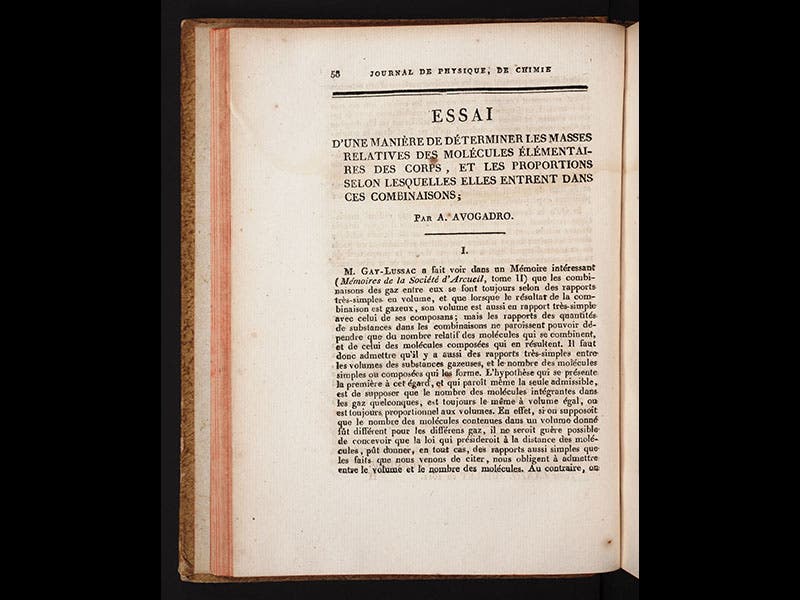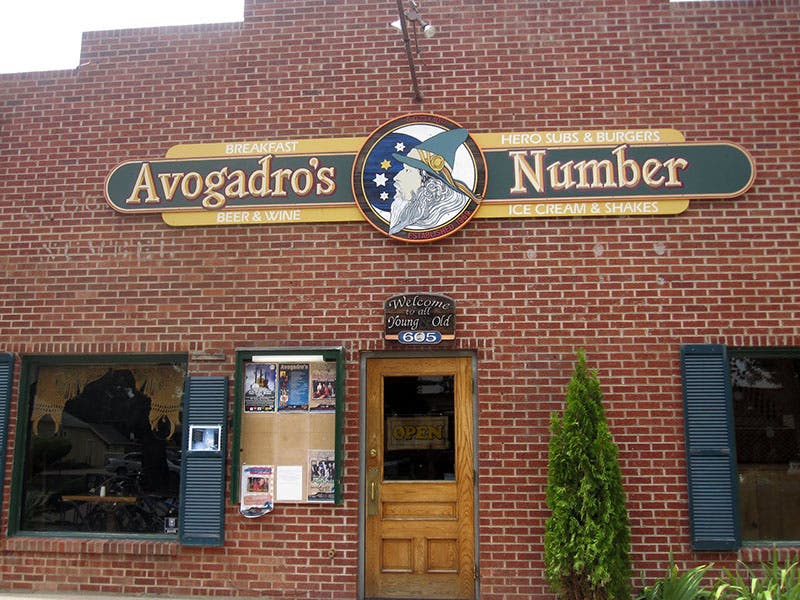Scientist of the Day - Amedeo Avogadro


Amedeo Avogadro, an Italian chemist, was born Aug. 9, 1776. In 1808, a French chemist, Joseph-Louis Gay-Lussac, announced that when two gases combine, their volumes are in the ratios of small numbers. For example, two volumes of hydrogen combine with exactly one volume of oxygen to form water. This was known as the law of combining volumes, and Avogadro wondered why it was so. He proposed a solution, known as Avogadro's hypothesis, in 1811, when he suggested that equal volumes of gases, at the same temperature and pressure, contain equal numbers of atoms or molecules. If so, the law of combining volumes would be a necessary consequence.
No one paid much attention to Avogadro until 1860, when Ladislao Cannizzaro, at the first international congress of chemistry in Karlsruhe, reintroduced Avogadro to the chemical world, arguing for the truth of Avogadro's hypothesis, and stressing that the molecule rather than the atom is the basic unit of chemical interaction (Cannizzaro was our Scientist of the Day on July 13, 2017). Molecules, and Avogadro, would never again disappear from chemistry.
Most people associate Avogadro with "Avogadro's number," but that was a later development. Avogadro had no idea how many molecules there are in a standard volume of a gas, but beginning in 1909, Jean Perrin of France sought to determine how many molecules of hydrogen there are in a volume containing one gram of the gas, and that number turned out to be 6.02 x 1023. Since an equal volume of any gas should contain the same number of molecules, Perrin gave it a label: Avogadro's number. Later, the amount of any substance that contains Avogadro's number of molecules came to be called a "mole", and it was a useful measure, because a mole of any element is just that element's atomic weight in grams, so that 12 grams of carbon, which has an atomic weight of 12, will contain 6.02 x 1023 molecules. One modern consequence of all this, fateful for the parents of teenage students, is that chemistry classes all across the country celebrate Mole Day at 6:02 AM on October 23, which makes for very early wake-up calls and breakfast. We honored Mole Day and its connection to Avogadro on Oct. 23, 2014.
In modern chemical practice, Avogadro's number has given way to Avogadro's constant, which has the same quantity but is defined differently. However, we suspect that Avogadro's number will never go away, since it would mean the demise of too many Avogadro’s-number T-shirts, coffee mugs, and jokes: “How did Avogadro die?—his number came up.” Much of the humor is lost with “Avogadro’s constant.”
Most chemists have never seen Avogadro’s original paper, so we display above the title page of volume 73 of the Journal de Physique for 1811, which we have in our serials collection, and the first page of Avogadro’s article. The portrait is from the Edgar Smith collection at the University of Pennsylvania, and the restaurant (fifth image), in Fort Collins, Colorado, is just cool.
Dr. William B. Ashworth, Jr., Consultant for the History of Science, Linda Hall Library and Associate Professor, Department of History, University of Missouri-Kansas City. Comments or corrections are welcome; please direct to ashworthw@umkc.edu.







![Using an astrolabe to measure the depth of a well, woodcut in Elucidatio fabricae vsusq[ue] astrolabii, by Johannes Stöffler, 1513 (Linda Hall Library)](https://assets-us-01.kc-usercontent.com:443/9dd25524-761a-000d-d79f-86a5086d4774/a998eb50-55d2-4a88-ace2-a50aa5fa86e7/Stoffler%201.jpg?w=210&h=210&auto=format&fit=crop)

